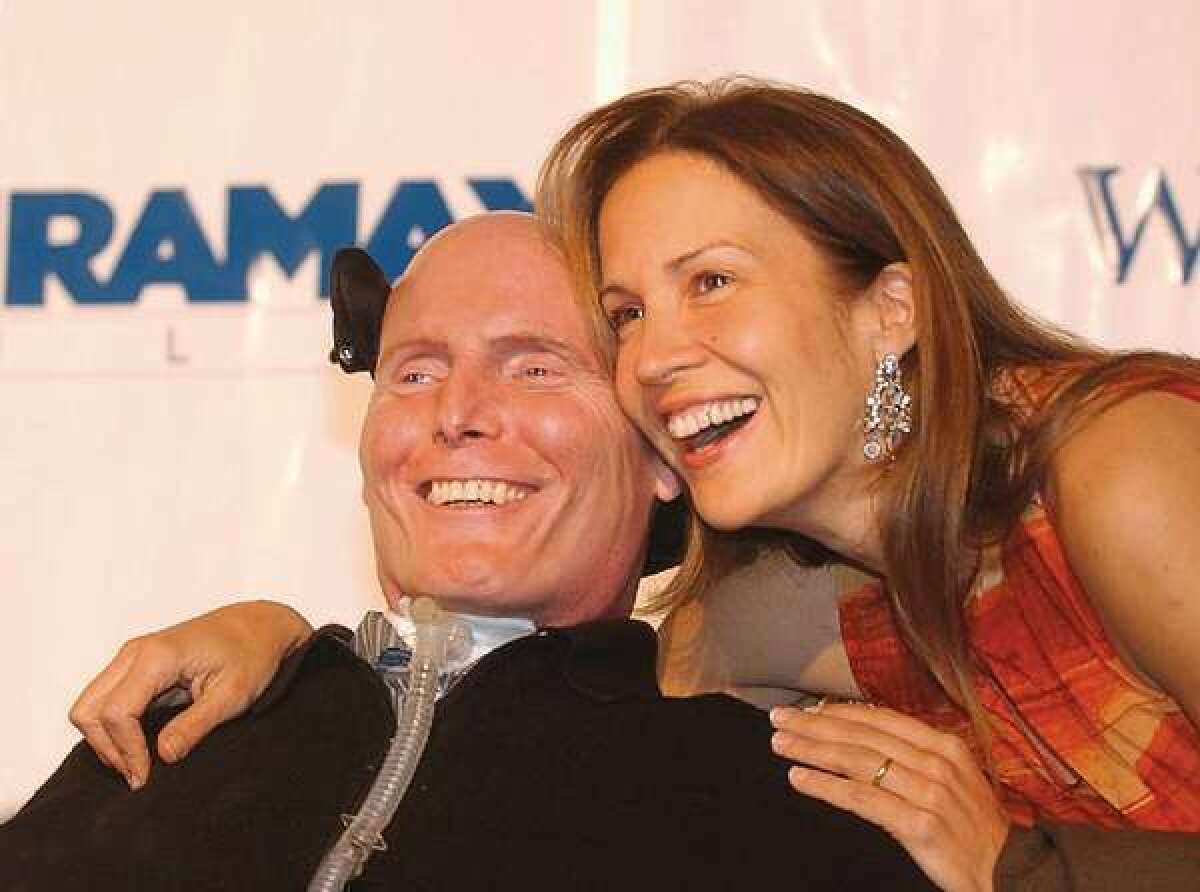Column: The California stem cell program’s $5.5-billion funding request might be its downfall

California’s stem cell program, created by voters in 2004, has made great strides in advancing what’s known as regenerative medicine and placing California at the center of the developing science.
The California Institute for Regenerative Medicine, or CIRM, which was established by Proposition 71, has spent its original endowment of $3 billion in state bond proceeds to build state-of-the-art laboratories and attract some of the field’s preeminent scientists. Its grants have brought scores of promising treatments for severe chronic diseases to the point of clinical trials.
Having effectively come to the end of its original state funding, CIRM is about to ask for more. An initiative aimed for the November 2020 ballot would renew the program with a new bond issue of $5.5 billion. The measure could have represented an opportunity not merely to extend the program for another 10 years, but to correct shortcomings created by Proposition 71, some of which persist to this day.
Why isn’t there strong motivation on the board to actually take charge of setting the future of this agency?...We’re missing in action.
— CIRM board member Jeff Sheehy
But as drafted by real estate developer Robert Klein II, the author of Proposition 71, the new proposal perpetuates many of the original measure’s flaws and makes some of them worse. That’s dangerous, because although the measure could fuel the stem cell program for years to come, it might also prompt a repudiation by voters sensitive to its many imperfections. Such an outcome would be tragic for California and the advanced science already supported by CIRM.
The initiative’s ambitious financial ask could remind voters that, for all its achievements, the program’s initial $3-billion expenditure has so far failed to yield a single marketable clinical product. That’s despite the sales pitch for Proposition 71 in 2004--that all that stood in the way of “cures” for Parkinson’s, Alzheimer’s, spinal cord injuries and other maladies was money.
The initiative’s promoters also projected that taxpayers would reap a financial windfall from their spending — indeed, that the program would pay for itself by generating at least $14 billion from royalties and reduced health costs for California. That hasn’t happened, and the bar will be much higher for the proposed new borrowing. Assuming an interest rate of 5%, a 30-year, $5.5-billion bond would cost taxpayers $275 million in interest every year for three decades.
Klein’s initiative fails to set forth a clear justification for nearly doubling CIRM’s funding for the next 10 years. It places new restrictions on how the money can be spent, depriving CIRM’s governing board of the flexibility it needs to serve a science that is evolving at a dizzying pace.
Moreover, the proposal perpetuates the cardinal error of Proposition 71 of rendering the program virtually immune to legislative oversight, despite its immense demand on taxpayer resources. Like Proposition 71, the new measure bars the Legislature from making amendments without a 70% vote in both houses, almost certainly an unattainable goal.
Klein says the funding increase is the product of inflation, but also is designed to fulfill the program’s aim “to empower scientists in California to move as far forward as we can to mitigate human suffering.” He says he considers keeping the program politically independent essential to inoculate it from the ebbs and flows of legislative fashion and ideological impulses. Targeting some of the spending, he says, provides the “predictability vital to attract and hold the best and the brightest here.”
What’s most troubling about the quest for new CIRM funding is that its leaders, including its 29-member board, didn’t take the reins themselves in mapping out the program’s future.
The $6-billion California stem cell program, created at the ballot box in 2004, is about to notch a major achievement.
“Why isn’t there strong motivation on the board to actually take charge of setting the future of this agency?” asks Jeff Sheehy, a former San Francisco county supervisor who was one of the original appointees to the CIRM board, but will depart early next year because of term limits in Proposition 71. “We have a responsibility to provide leadership. Yet we’re missing in action.”
Hard as it is to overstate how perilous the new proposal could be for the stem cell program’s future, it’s easy to pinpoint how it came about: CIRM’s leadership outsourced the drafting of the initiative to Klein. Despite his role in the Proposition 71 campaign and his service as the first CIRM chairman for more than seven years, today he has no official role in the program. So it’s proper to ask why he should be entrusted with its destiny.
CIRM Chairman Jonathan Thomas told me that the program had little choice but to work through Klein, in part because state agencies are forbidden to campaign for or against ballot measures.
The board had a “general sense that were there to be a measure to re-up [its funding], Bob was very well-equipped to put this together again.... Nobody on the board was similarly situated to not just draft a measure but to orchestrate a campaign, get signatures, or, raise money for it, which we can’t do. So, the best way to go was to fully inform Bob of what we needed to be dealt with and give input on the draft as submitted.”
But nothing in state law would have prevented the board from drafting its own renewal plan or working directly with the Legislature to design a funding initiative. The latter option, however, “never gained any traction with the board,” Thomas says.
Klein stepped into the vacuum, drafting his proposal largely behind closed doors. Board members had almost no direct input in the drafting process, certainly not in public. Nor did CIRM sponsor hearings for members of the public to contribute thoughts or concerns about the program’s record or its proper role as steward of billions of taxpayer dollars.
There’s no good time for a public agency to be embroiled in a conflict-of-interest scandal, but this is an especially delicate time for California’s stem cell agency.
No one should doubt the sincerity of Klein’s devotion to stem cell science or his stature as a supporter of the field. He has said he was inspired to adopt the cause after his youngest son was diagnosed with Type 1 diabetes, a condition that theoretically could be treated with stem cells.
His role in creating CIRM virtually out of thin air through Proposition 71 deserves respect. But now that the program has been operating for 16 years, it’s inappropriate for its own leadeship to place its fate in the hands of a private individual on a personal crusade, no matter how heartfelt his calling.
That brings us to the initiative proposal itself.
Klein’s measure includes some provisions that would fill known gaps in CIRM’s program. It would establish training and fellowship programs to prepare California undergraduates and grad students for careers in regenerative sciences, with a focus on community colleges and California State University.
It would also create a task force to work on the access and affordability of CIRM-funded treatments for Californians. Although the measure is vague on how those goals could be achieved, at least it recognizes that the six- or seven-figure costs of such treatments will be an obstacle for patients.
But the measure misfires in other ways, including through specific directives for how CIRM must spend much of its new funding. For example, the measure specifies that a minimum of $1.5 billion must be spent on research on brain and central nervous system conditions such as Alzheimer’s, Parkinson’s, schizophrenia and autism.
At a Nov. 15 board meeting, Keith Yamamoto, vice chancellor for research at UC San Francisco, complained that fencing off such a large portion of resources deprives the board of “discretion ... to choose the best proposals that come forward” and shows a “lack of confidence in our scientific reviewers.”
Evangelina Padilla Vaccaro of Corona is the new face of stem cell science in California.
The initiative perpetuates CIRM’s embedded conflicts of interest, a persistent issue that was cited by, among others, the National Academy of Sciences in a 2012 review of the program. The program’s leadership has always maintained that these conflicts are more imagined than real. “There never has been an actual conflict of interest in all the years that CIRM has been operating,” Thomas said at a board committee meeting May 15.
But CIRM’s history bristles with documented conflicts, starting with the 2007 effort by then-board member John C. Reed to persuade CIRM staff to reverse the rejection of a grant for the La Jolla-based Burnham Institute for Medical Research, where he was CEO. In 2012, the board approved $40 million in funding for StemCells Inc., including $20 million for an Alzheimer’s research project that CIRM’s scientific review panel had rejected twice. The firm’s co-founder, Irving Weissman of Stanford, had been a major backer of Proposition 71, and Klein (who was no longer chairman but still influential) lent the rejected application his outsopoken support. (StemCells Inc. went out of business in 2016.)
CIRM’s grantmaking record also fosters the impression of institutional logrolling. Proposition 71 mandated that as many as 23 of the governing board’s 29 members, who are appointed by the governor, other statewide officials, and legislative leaders, be drawn from academic institutions or disease advocacy groups that happen to be eligible to receive CIRM grants or could be associated with grantees. Indeed, the vast majority of CIRM’s grants have gone to California institutions with current of former representatives on the governing board. Klein’s initiative would expand the board to 35 members, which could bring even more players into what appears to be an elite club.
The proposal’s biggest flaw is its exemption of CIRM from legislative oversight, which is carried over from Proposition 71. Klein says this approach is based on his experience as a legislative aide years ago, when he became disaffected with “the incredible amount of time and energy” it took to get anything done in Sacramento, as well on his perception of the need to immunize CIRM against the religious and ideological currents that often swirl around government policies on advanced biology.
Politics can be messy, but public oversight of billions of dollars in spending by a public agency is imperative. CIRM’s performance as an independent fiefdom hasn’t been entirely auspicious. Had the program been accountable to the Legislature, for instance, would Thomas be pulling down his salary of more than $400,000 or CIRM President and CEO Maria Millan her compensation of about $550,000, all to run a program that has issued an average of about $200 million in grants per year?
For comparison, Francis Collins earns about $200,000 as director of the National Institutes of Health, which have a combined budget of more than $30 billion. Gov. Gavin Newsom this month received a raise--to $209,747.
CIRM’s board members seem to beleive they’re now boxed into full-throated support of Klein’s initiative proposal. At the Nov. 15 meeting, some members cautioned their colleagues that criticizing Klein’s draft would only lend fodder to CIRM’s opponents and ruin the chances for passage. “We don’t want to make the perfect be the enemy of the good,” board member George Blumenthal, the chancellor of UC Santa Cruz, said at the session.
Klein told me he “successfully reached and talked with 19 of the 26 current board members,” but the gist of these encounters isn’t public. Thomas stated at a recent board meeting that “less than a handful” of CIRM board members “had the opportunity to talk to Bob ... and that’s not good.”
Board members didn’t see a draft of Klein’s proposal until early October. They held a limited discussion about it as a nonagenda item at their next regularly scheduled meeting on Oct. 31. Then, partially at Sheehy’s insistence, Thomas scheduled a board meeting with Klein, but that wasn’t held until Nov. 15 — a mere three days before the deadline to make changes in the initiative, which had already been submitted to the attorney general for review. (Once the review is completed, Klein will be permitted to gather the 623,000 signatures needed to place the initiative on the 2020 ballot.)
Klein made only a few modest changes in the measure in response to the feedback. That‘s not sufficient. He should withdraw his measure, and CIRM’s leadership should write a new one or work with Gov. Newsom and the Legislature to map out the program’s next act.
CIRM’s leadership needs to show the public that it’s capable of taking charge of the program’s destiny. If it’s not willing to make its own case for CIRM’s continued existence, how can it persuade voters to give it one cent more?








